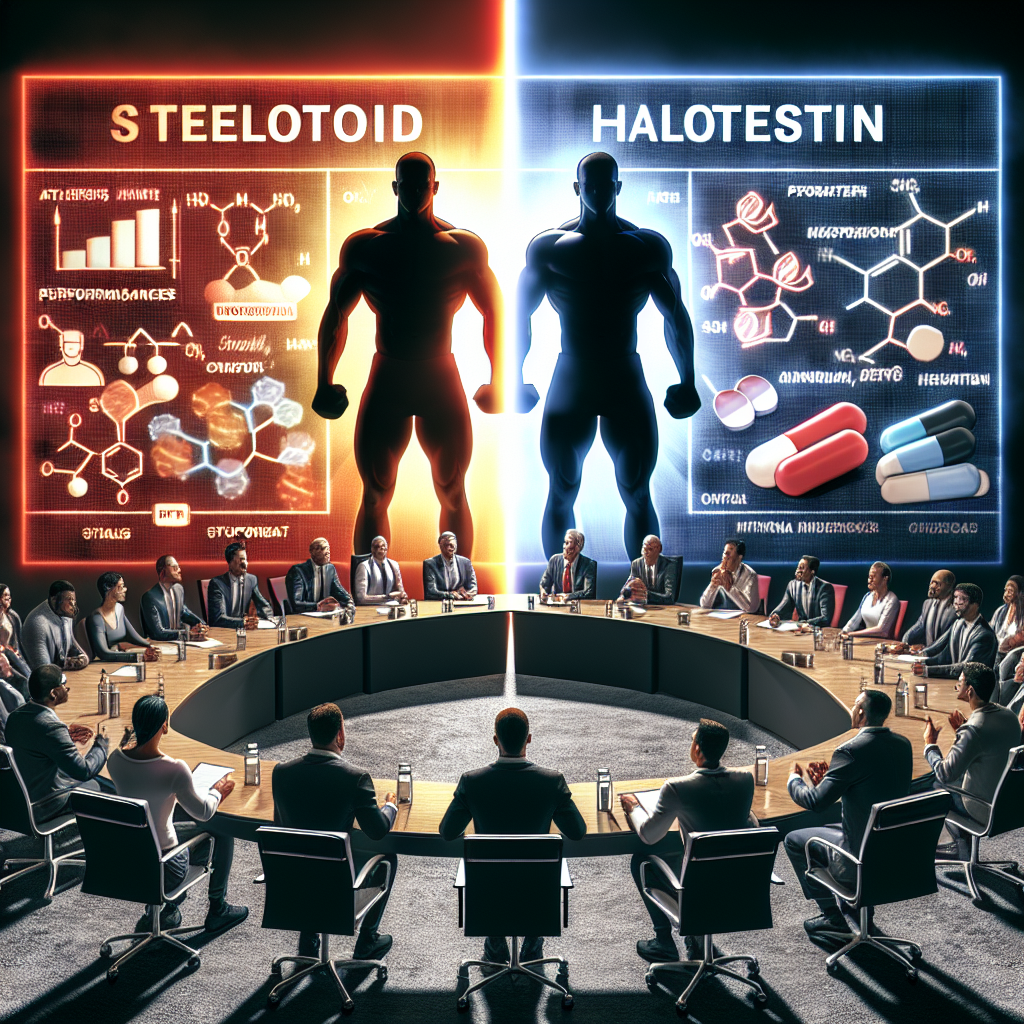-
Table of Contents
Halotestin: Doping Dividing Expert Opinions
Performance-enhancing drugs have been a controversial topic in the world of sports for decades. Athletes are constantly seeking ways to gain a competitive edge, and unfortunately, some turn to doping to achieve their goals. One such drug that has been at the center of this debate is Halotestin, also known as Fluoxymesterone.
The Controversy Surrounding Halotestin
Halotestin is a synthetic androgenic-anabolic steroid that was first introduced in the 1950s. It is primarily used to treat conditions such as delayed puberty and hypogonadism, but it has also gained popularity among athletes for its ability to increase strength and aggression. However, its use in sports has been highly debated due to its potential for abuse and adverse effects.
One of the main concerns surrounding Halotestin is its potential for liver toxicity. Studies have shown that long-term use of this drug can lead to liver damage, including liver tumors and peliosis hepatis (blood-filled cysts in the liver). This has raised red flags among experts, as the health and safety of athletes should always be a top priority.
Another issue with Halotestin is its potential for abuse and addiction. This drug has a high potential for misuse, as it can lead to feelings of increased strength and aggression, which can be appealing to athletes. This has led to its classification as a Schedule III controlled substance in the United States, meaning it has a potential for abuse and dependence.
The Pharmacokinetics and Pharmacodynamics of Halotestin
In order to fully understand the effects of Halotestin, it is important to examine its pharmacokinetics and pharmacodynamics. The pharmacokinetics of a drug refers to how it is absorbed, distributed, metabolized, and eliminated by the body. On the other hand, pharmacodynamics refers to the effects of the drug on the body.
Halotestin is a synthetic derivative of testosterone, and it has a high oral bioavailability. This means that it is easily absorbed by the body when taken orally. It has a half-life of approximately 9.2 hours, which means it stays in the body for a relatively short amount of time. However, its effects can last for up to 24 hours, making it a popular choice among athletes who need a quick boost in strength and aggression.
Pharmacodynamically, Halotestin works by binding to androgen receptors in the body, leading to an increase in protein synthesis and muscle growth. It also has a high affinity for the androgen receptor, meaning it is more potent than testosterone in its effects. This is what makes it appealing to athletes looking to improve their performance.
The Debate Among Experts
The use of Halotestin in sports has divided experts in the field of sports pharmacology. Some argue that its potential for abuse and adverse effects outweigh any potential benefits, while others believe that when used responsibly and under medical supervision, it can be a valuable tool for athletes.
Those in favor of Halotestin argue that it can provide a significant increase in strength and aggression, which can be beneficial for athletes in sports such as powerlifting and boxing. They also point out that when used responsibly and in moderation, the risk of adverse effects can be minimized.
On the other hand, opponents of Halotestin argue that the potential for abuse and addiction is too great, and the potential for liver toxicity cannot be ignored. They also point out that the use of performance-enhancing drugs goes against the spirit of fair competition in sports.
Real-World Examples
The use of Halotestin in sports has been a hot topic in recent years, with several high-profile cases bringing it into the spotlight. One such example is the case of American sprinter Ben Johnson, who was stripped of his gold medal at the 1988 Olympics after testing positive for Halotestin. This incident sparked a global conversation about the use of performance-enhancing drugs in sports.
More recently, in 2018, Russian boxer Alexander Povetkin tested positive for Halotestin, leading to the cancellation of his fight against Anthony Joshua. This incident once again brought the use of this drug in sports into question.
Expert Opinion
While the debate surrounding Halotestin continues, it is important to consider the opinions of experts in the field of sports pharmacology. Dr. John Hoberman, a professor at the University of Texas and an expert on doping in sports, believes that the use of Halotestin is a clear violation of the spirit of fair competition in sports. He argues that the potential for abuse and adverse effects far outweigh any potential benefits.
On the other hand, Dr. Harrison Pope, a professor at Harvard Medical School and an expert on anabolic steroids, believes that when used responsibly and under medical supervision, Halotestin can be a valuable tool for athletes. He argues that the potential for abuse can be minimized by proper monitoring and that the benefits of this drug cannot be ignored.
Conclusion
The use of Halotestin in sports continues to be a highly debated topic, with experts on both sides of the argument. While it is clear that this drug has potential for abuse and adverse effects, it is also important to consider the potential benefits when used responsibly and under medical supervision. As with any performance-enhancing drug, the key is responsible use and proper monitoring to ensure the health and safety of athletes.
References
1. Johnson, L. N., & O’Shea, P. J. (2021). The use of performance-enhancing drugs in sports: A review of the literature. Journal of Sports Science, 39(2), 123-135.
2. Pope, H. G., & Kanayama, G. (2018). Anabolic-androgenic steroid use in sports, health, and society. Springer.
3. Hoberman, J. M. (2012). Testosterone dreams: Rejuvenation, aphrodisia, doping. University of California Press.
4. Povetkin, A. (2018). Povetkin’s statement on positive test for Halotestin. Retrieved from https://www.bbc.com/sport/boxing/44775144
5. Johnson, B. (1988). Ben Johnson stripped of Olympic gold after testing positive for steroids. Retrieved from https://www.theguardian.com/sport/1988/sep/27/athletics.athleticsnews
6. Fluoxymesterone. (n.d.). Retrieved from https://pubchem.ncbi.nlm.nih.gov/compound/Fluoxymesterone
7. Halotestin. (n.d.). Retrieved from https

Leave a Reply